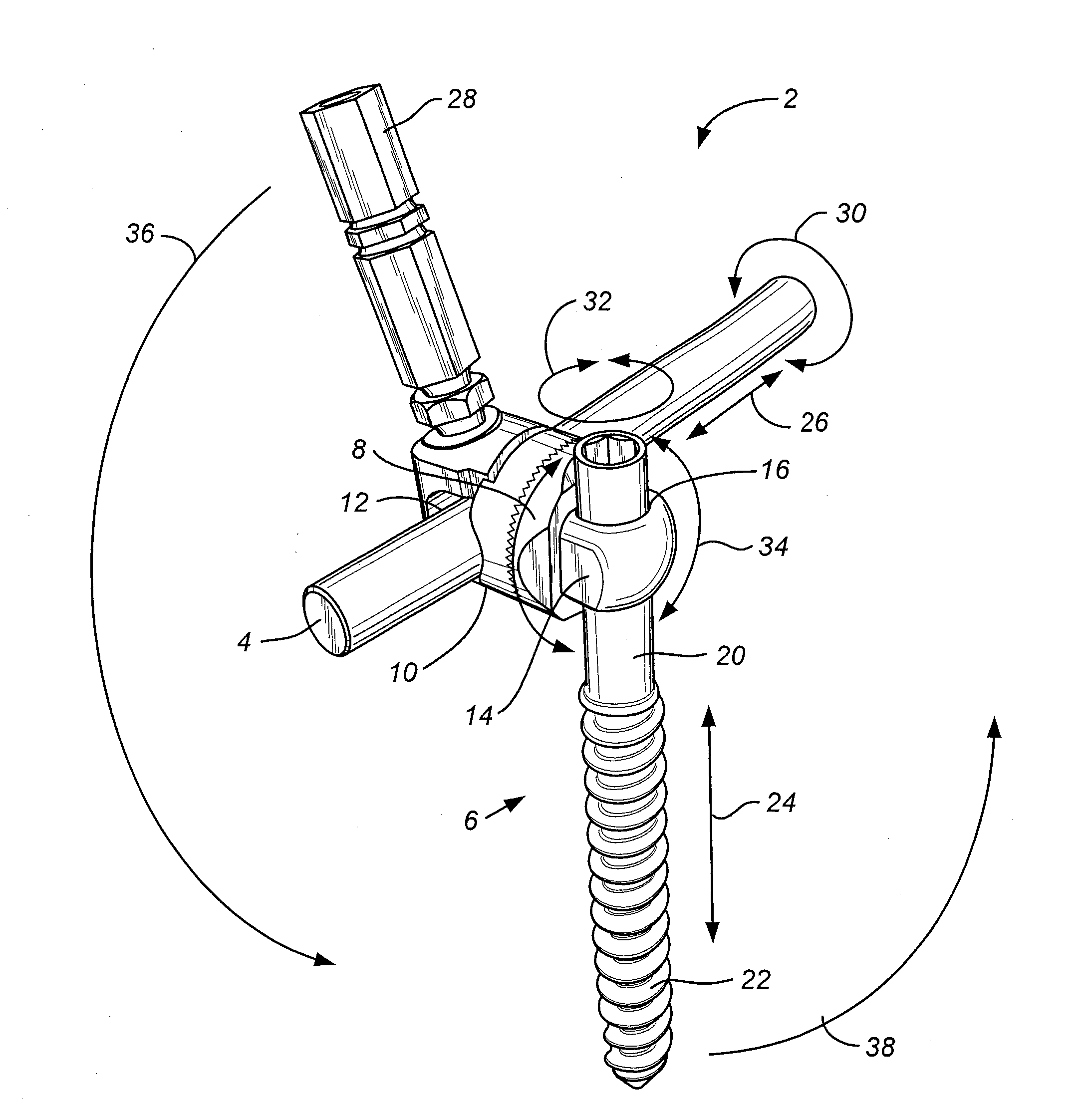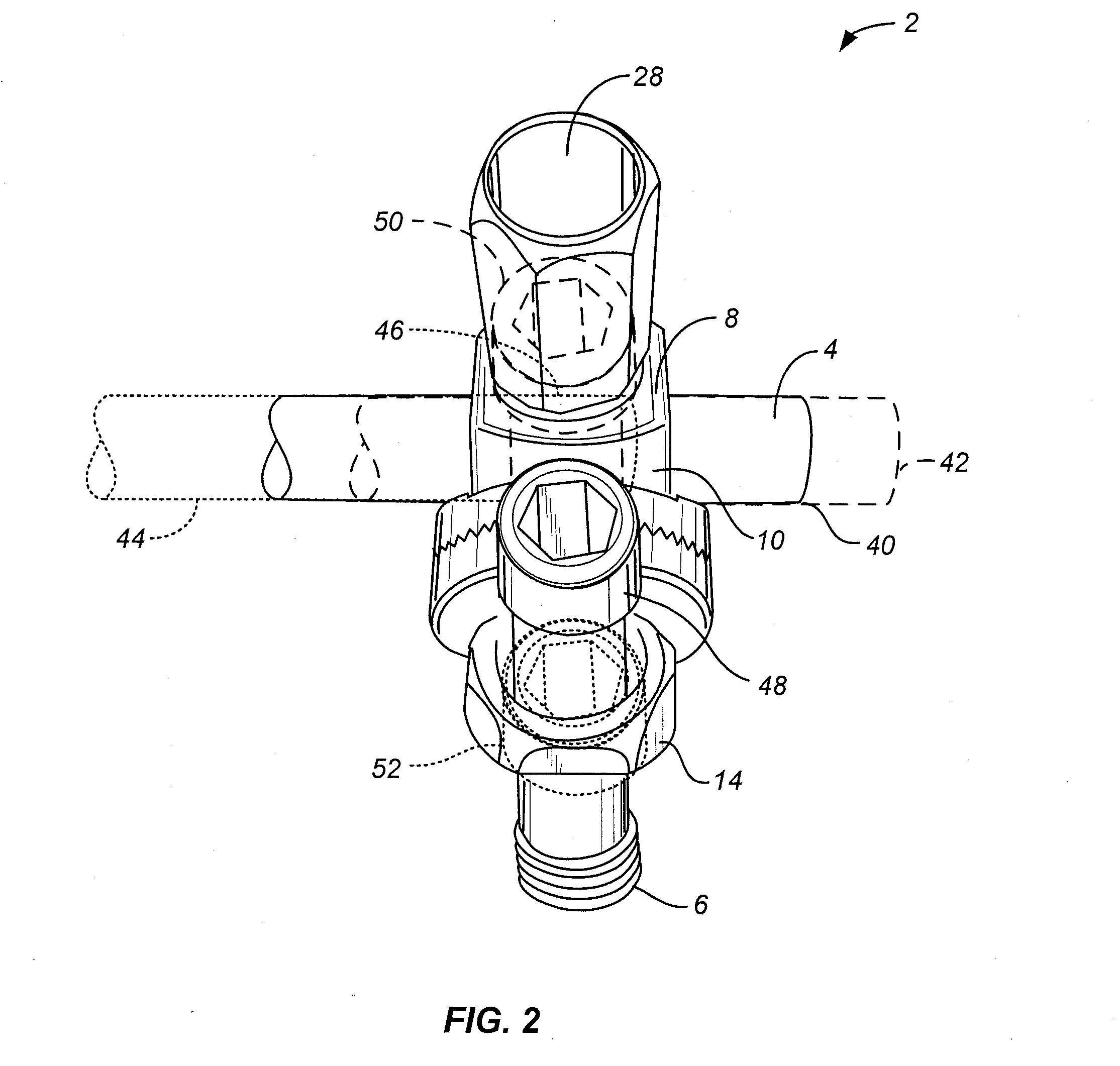Spinal rod and bone screw caps for spinal systems assemblies
a technology of spinal system and spine, applied in the field of spinal rod and bone screw caps for spinal system assemblies, can solve the problems of 4.5 million patients who fail conservative therapy, are left with debilitating pain, and inconvenience for surgeons, and achieve the effect of reducing the surgeon's/her time during the operation, preventing slippage and disassembly, and reducing the time of operation
- Summary
- Abstract
- Description
- Claims
- Application Information
AI Technical Summary
Benefits of technology
Problems solved by technology
Method used
Image
Examples
Embodiment Construction
[0036]Referring to FIG. 3A, a threaded cap 56 is shown which screws on to spinal rod threads 54 on the end of spinal rod 4. As shown in FIG. 3B, the cap 56 has a threaded aperture 58 into which spinal rod threads 54 from a spinal rod 4 are screwed. Typically, the spinal rod 4 has male threads, while the cap 56 has female threads. However, the gender of the spinal rod 4 and cap 56 may be reversed where the spinal rod 4 comprises female threads and the cap 56 has male threads. One preferred embodiment is a smooth and round cap 60. Such a smooth and round cap 60 can be easily placed onto the spinal rod 4, screwed into a spinal rod threads 54 and finger-tightened by a surgeon. If a more secure cap is desired, a wrench cap 62 with flat sides 64 such as shown in FIG. 3C may be used. A wrench cap 62 is similar to a washer or nut with flat sides. In this embodiment, the two flat sides 64 allow a small hand wrench to torque the wrench cap 62 a little tighter than finger tightening. Although ...
PUM
| Property | Measurement | Unit |
|---|---|---|
| angles | aaaaa | aaaaa |
| rigidity | aaaaa | aaaaa |
| length | aaaaa | aaaaa |
Abstract
Description
Claims
Application Information
 Login to View More
Login to View More - R&D
- Intellectual Property
- Life Sciences
- Materials
- Tech Scout
- Unparalleled Data Quality
- Higher Quality Content
- 60% Fewer Hallucinations
Browse by: Latest US Patents, China's latest patents, Technical Efficacy Thesaurus, Application Domain, Technology Topic, Popular Technical Reports.
© 2025 PatSnap. All rights reserved.Legal|Privacy policy|Modern Slavery Act Transparency Statement|Sitemap|About US| Contact US: help@patsnap.com



